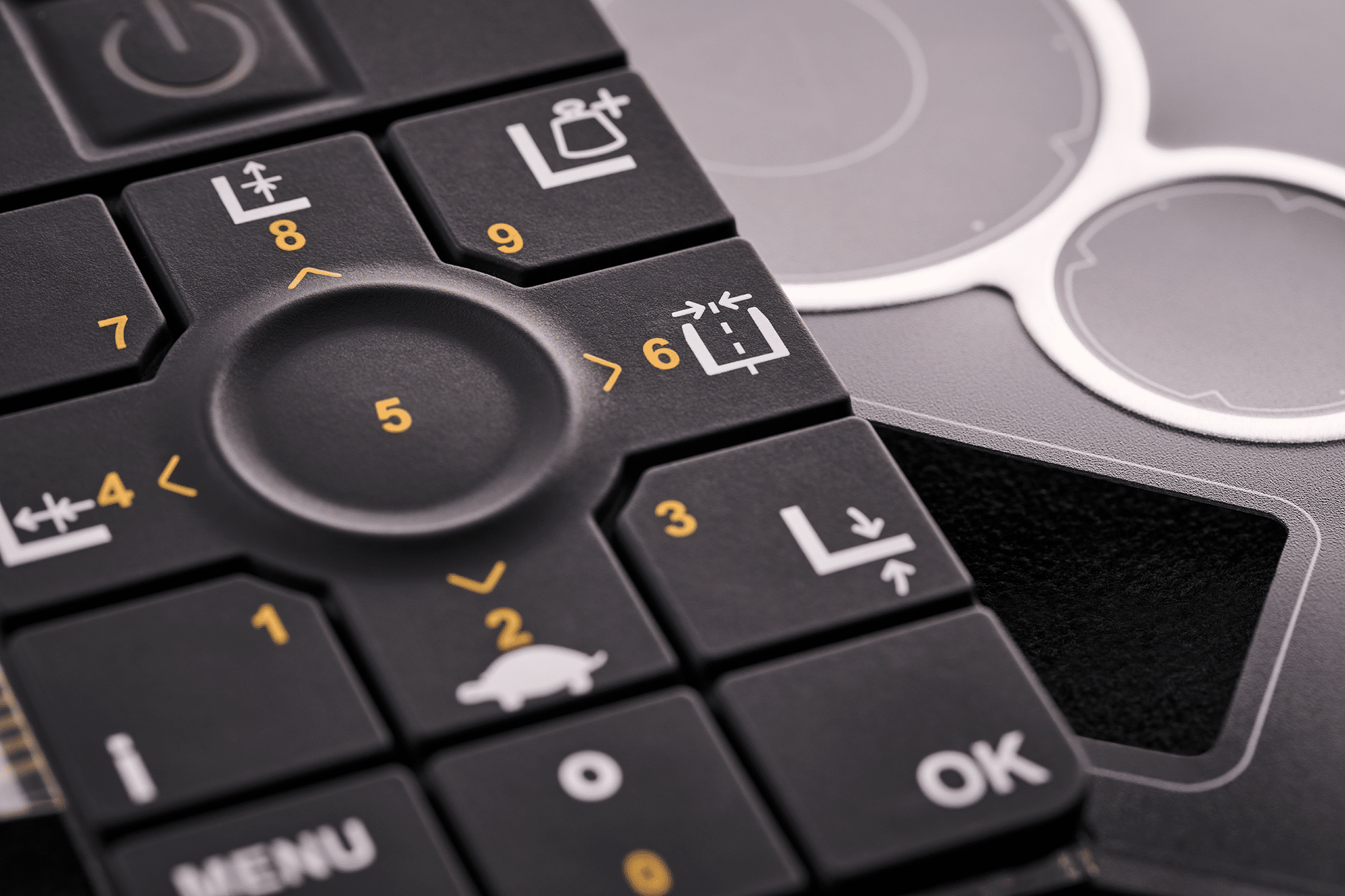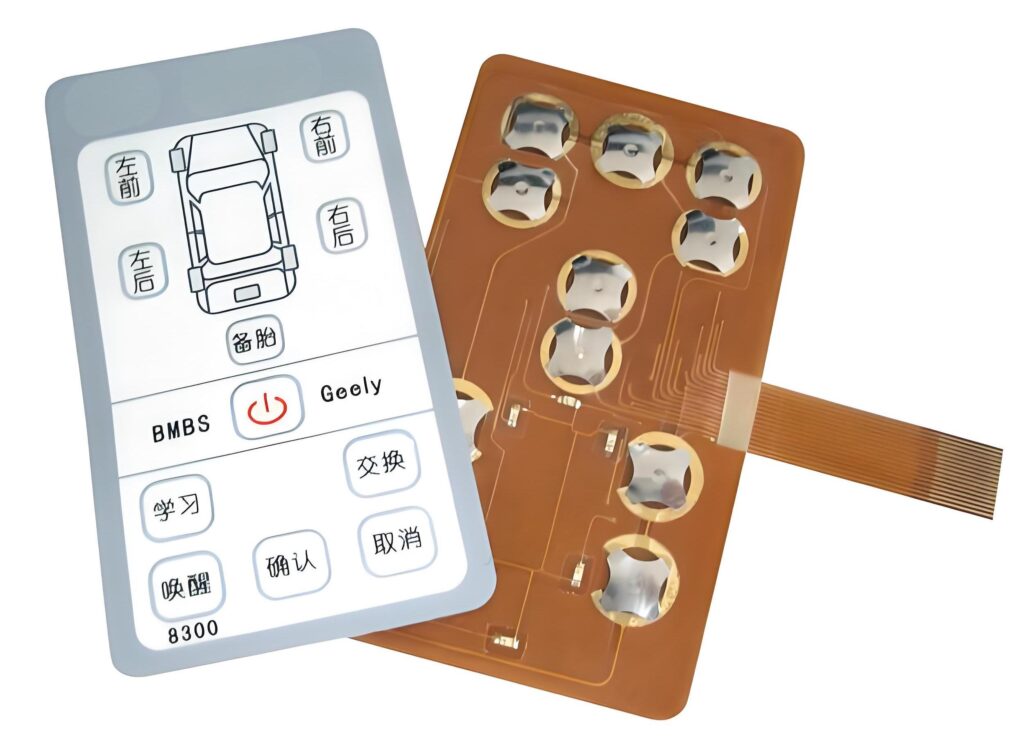The Production Process Behind Membrane Change: What You Need to Know
The production procedure behind membrane switches combines careful design, product choice, and quality assurance. It starts with comprehending the ins and outs of membrane layer switch style and proceeds through different phases, consisting of product options and printing techniques. Each stage plays a vital role in making sure functionality and toughness. Nevertheless, the intricacies of layer building and the extensive testing criteria might disclose insights that are not promptly apparent. What exists past these fundamental components?
Recognizing Membrane Layer Switch Over Style
Although membrane switches may appear easy at very first glance, their style entails elaborate considerations that guarantee performance and sturdiness. The style procedure starts with a thorough understanding of user requirements, including the interface's desired application and ecological elements. Comfort designs is a vital element, as the layout needs to promote ease of use while guaranteeing that responsive comments fulfills individual expectations.Moreover, the layering of components, such as graphic overlays, adhesive layers, and conductive traces, have to be exactly crafted. membrane switch. This split arrangement not only affects the button's responsiveness yet additionally influences its longevity. Attention is offered to the securing strategies utilized to safeguard against dampness and dirt, which might endanger efficiency. In addition, style factors to consider reach aesthetics, where color pattern and visual quality boost individual experience. Eventually, the layout of membrane layer switches equilibriums functionality, individual experience, and toughness, ensuring that they fulfill the needs of different applications efficiently
Materials Utilized in Membrane Layer Switch Production
When selecting products for membrane button production, it is necessary to consider both efficiency and durability. The primary products consist of polyester and polycarbonate films, which supply versatility and toughness. These movies are commonly covered with adhesive to assure proper bonding to substratums. Conductive inks, commonly made up of silver or carbon, are crucial for producing electrical connections within the switch, enabling trusted operation.Additionally, a protective layer, such as a difficult coat, is regularly used to boost scratch resistance and longevity. The choice of backing product, such as acrylic or foam, can considerably impact the button's tactile feel and general user experience. Numerous ecological variables, including temperature level and humidity, should assist material choice to assure peak performance in certain applications. Eventually, the best mix of materials contributes to the membrane layer button's capability and life-span, making educated options important for makers.
The Printing Refine: Creating Video and Text
The printing procedure in membrane button production plays a considerable duty in producing high-grade graphics and message. Different visuals style methods are employed to guarantee aesthetic appeal and performance, while careful ink choice approaches are essential for resilience and performance. Recognizing these elements is fundamental for accomplishing finest outcomes in membrane switch style.
Graphic Design Techniques
Graphic style techniques play an essential role in the printing procedure of membrane layer buttons, as they define how graphics and message will eventually show up on the last product. Efficient graphic design entails the tactical use formats, fonts, and shades to enhance readability and aesthetic charm. Developers commonly utilize vector graphics for scalability, making sure that photos continue to be sharp at various sizes. In addition, interest to contrast and placement is crucial, as it affects customer interaction and aesthetic top quality. The unification of branding aspects, such as logo designs, need to be taken care of with care to keep brand name honesty. Generally, thoughtful visuals design techniques contribute substantially to the capability and appearance of membrane switches, influencing customer experience and item performance.
Ink Option Methods
Choosing the suitable ink is crucial for attaining the preferred aesthetic top quality and longevity in membrane button manufacturing. Numerous ink types are utilized, including solvent-based, water-based, and UV-curable inks. Each kind supplies distinctive features, such as resistance, adaptability, and attachment to ecological factors. Solvent-based inks are commonly favored for their toughness and vibrant colors, while water-based inks are extra eco-friendly but may have constraints in attachment. UV-curable inks give fast curing and robust efficiency. Additionally, shade matching methods ensure that the selected inks line up with layout specifications. Ultimately, the selection of ink need to think about aspects such as application technique, substrate compatibility, and end-use requirements to accomplish exceptional cause membrane layer switch graphics and text.
Layer Building And Construction and Assembly

Product Choice Refine
A mindful choice of products is vital in the manufacturing procedure of membrane layer switches, as it directly influences capability and durability. The key products made use of consist of polyester, reference polycarbonate, and various conductive inks. Polyester is commonly preferred for its superb resistance to chemicals and abrasion, making it suitable for rough atmospheres. Polycarbonate, on the other hand, gives superior clarity and impact resistance, which is helpful for applications calling for visibility and robustness. Conductive inks, usually composed of silver or carbon, are crucial for creating reliable electrical pathways. Additionally, the option of adhesive materials impacts the general integrity of the button - membrane switch. Evaluating elements such as ecological direct exposure, tactile responses, and aesthetic demands guides suppliers in picking the very best materials for their details applications
Layer Attachment Methods
Adhering layers in membrane button construction is an essential procedure that assures functionality and durability. Various bond techniques are utilized to safeguard optimal bonding in between layers, which commonly consist of making use of adhesives, warmth, and stress. Pressure-sensitive adhesives (PSAs) are generally utilized for their ease of application and prompt bonding abilities. Furthermore, thermal bonding techniques can be used, where heat is utilized to activate adhesive residential or commercial properties, protecting a strong bond. The selection of attachment technique largely depends upon the materials involved and the details application needs of the membrane layer switch. Appropriate alignment and consistent application of adhesives are vital to protect against defects, safeguarding the button operates properly throughout its desired lifespan.
Top Quality Control Steps
Ensuring quality assurance throughout the layer construction and assembly of membrane layer switches is necessary for preserving efficiency and reliability. This process usually entails several crucial steps, including complete examinations at each phase of manufacturing. Suppliers use advanced screening methods, such as peel examinations and bond evaluations, to validate the stability of layer bonds. Additionally, visual assessments are carried click reference out to recognize any defects in printing or product incongruities. Environmental conditions, such as temperature and humidity, are carefully kept an eye on to ensure excellent treating and adhesion. Furthermore, regular calibration of equipment assists keep specific production criteria. By applying these top quality control actions, makers can significantly reduce the danger of product failing, assuring that the final membrane layer switches over satisfy the called for specs and consumer expectations.
Testing and Quality Assurance Steps

Advancements in Membrane Change Technology
As developments in modern technology proceed to evolve, membrane buttons are profiting from ingenious developments that improve their performance and customer experience. One significant development is the integration of capacitive touch technology, which permits more intuitive and receptive interface. This change not just boosts visual appeals but likewise decreases mechanical deterioration, expanding the lifespan of the switches.Additionally, innovations in visuals overlay materials have led to enhanced durability and resistance to environmental factors such as wetness and UV light. These products now offer improved quality and illumination, more elevating the visual appeal.Furthermore, the consolidation of smart modern technology is transforming membrane switches into interactive control panels, making it possible for connectivity with IoT gadgets. This connection cultivates a seamless user experience, leading the way for applications in numerous markets, from healthcare to customer electronics. Jointly, these developments position membrane switches as crucial elements in modern-day tool layout.
Regularly Asked Concerns
Exactly how Long Does the Membrane Switch Over Production Refine Take?
The period of the membrane layer switch production procedure can vary considerably. Variables such as complexity, products used, and manufacturing quantity you could try here influence timelines, with normal manufacturing ranging from a couple of days to several weeks for conclusion.
What Are the Typical Applications for Membrane Layer Switches?
Membrane buttons are frequently utilized in numerous markets, consisting of automobile controls, family appliances, clinical tools, and consumer electronics (membrane switch). Their flexibility and resilience make them excellent for applications needing straightforward user interfaces and dependable efficiency in diverse settings
Can Membrane Changes Be Personalized for Specific Needs?

What Is the Life-span of a Regular Membrane Switch?
The life expectancy of a common membrane switch differs, yet generally, it varies from 1 to 5 million cycles. Factors such as usage, atmosphere, and worldly top quality significantly affect durability and general efficiency over time.

Are Membrane Layer Switches Over Ecologically Friendly?
The ecological friendliness of membrane switches over varies. Some materials made use of might not be recyclable, while others can be environment-friendly. The general influence relies on producing techniques and materials, demanding mindful factor to consider during selection and disposal. The manufacturing process behind membrane layer changes combines mindful design, material option, and high quality control. It starts with understanding the complexities of membrane layer switch style and proceeds through various phases, consisting of product selections and printing strategies. When selecting products for membrane switch production, it is essential to consider both efficiency and toughness. A cautious selection of materials is important in the manufacturing process of membrane switches, as it straight affects functionality and toughness. The choice of bond approach largely depends on the products included and the certain application requirements of the membrane layer switch.